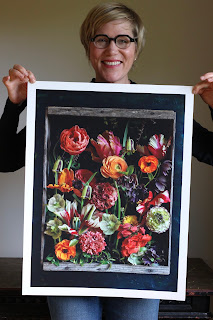At the nearby track where I walk when the roads are icy or I’m recovering from yet another injury, or have time only for a quick two miles, on many mornings on the inside field, a freelance soccer coach takes groups of youngsters through what to me seem like advanced skill drills. A blur of motion, legs, soccer balls. I have almost no interest in the game, but what I love is that no matter where on the track I am, or even how windy it may be, I hear the lilt of the coach’s rich voice, his island accent, urging his players on.
When he first appeared, I noticed that no matter what mistake a player may make, no matter how much one of the kids may be struggling, what comes out of this man’s mouth is: “And, we go on.”
I learned to love hearing him, and some days when I was driving to the track, hoped fervently the coach would be there, boosting those hopeful, keep-on-trying kids. When I hear him encouraging them, especially on days when I’m considering cutting my walk short, that small push is enough.
Like now.
Middle of winter in New Jersey. And though I’ve lived here all but a half-dozen years of my life, I’m always and inexplicably a bit surprised at what happens (snow, ice, bone rattling cold), and also a little dismayed (Seasonal Affective Disorder, otherwise known as the daily gray day doldrums). Toss in two new broken bones in my foot, and here we are indeed: February, slightly depressed, too much forced sedentary-ness, staying home far too much.
Keeping me going just now, as I clump around in an awkward walking boot: teaching (this semester, an MFA course, “Reading as a Writer,” which I developed several years ago); writing (barely trudging around the track, but showing up); editing and coaching (absolutely nothing better than helping writers polish their drafts, manuscripts, and skills).
Yet, some days, when it all gets to me—like the gray and icy 13-degree day last week when my foot ached and I ran out of British crime dramas to watch—it’s my non-writer, feeling crummy but determined to do something activities that keep me going on. That is, I organize. Cull closets and shelves, then toss, sell, or find ways to give away. I’ve culled my office, notably my bulging bookshelves, three times recently. A neighborhood social media page ensures the novels and memoirs and biographies I part with find new readers nearby.
Most recently, I’ve been thinning my writing craft bookshevles. This group (pictured) is ready to go. (I've either got a duplicate copy, or read it and got what I needed from it, or for some reason it didn't speak to me but may be just what another writer needs.) And I’d love to give them to you, my blog readers and writing and reading friends. Want one? Email me with your U.S. postal address and I’ll send it via media mail at my cost. (If you can make good use of several, and are willing to share mailing expenses, we can do that too.) That’s it. Books to a new home where they can maybe inspire another writer.
Here’s hoping your winter/pandemic/getting-back-to-normal/whatever projects and activities are feeding you.
























